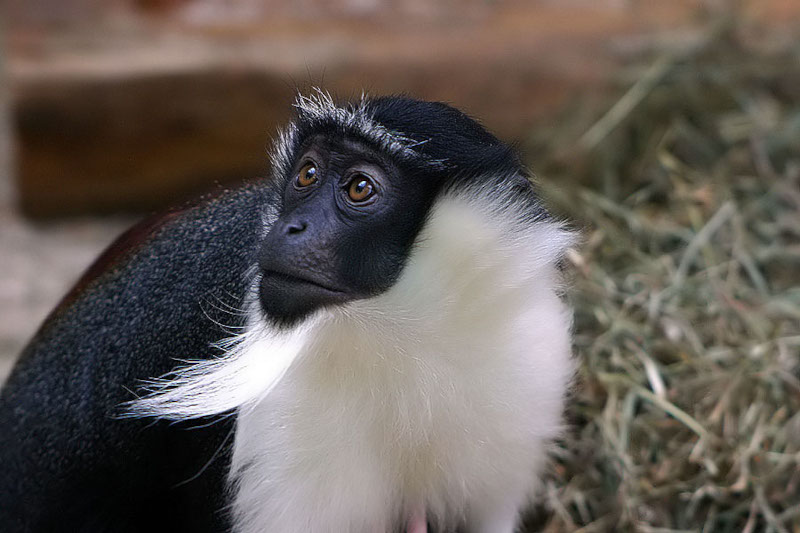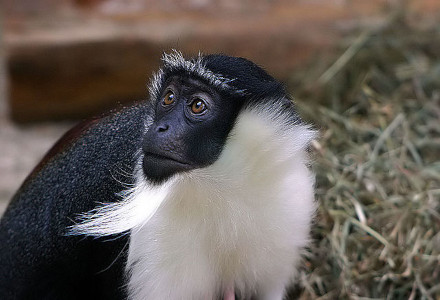
Photographer: Wilfried Berns
CC License: http://bit.ly/2IjEG4n
Roloway Monkey Facts
- The most noteworthy fact about the Roloway Monkey remains its unfortunate status of Critically Endangered on the IUCN Red List of Threatened Species. That fact exists because this animal ranks among the most highly endangered of any primate in its endemic range.
- This ranking occurs because this Old World primate species remain especially vulnerable to the actions of mankind. The species appears to be especially ill-equipped for adapting to changing conditions within its environment.
- Between 1975 and 1990 alone, the known population of this remarkable primate species declined by 80%. Additionally, deforestation of its endemic habitat was the principal reason for such tragic losses in such a short span of time.
- Yet the threats to its continued existence have not ended. While deforestation in the region has slowed, it has not ceased altogether. Indeed, individuals also face the threat of hunters, who seek it as a source of bushmeat.
Related Species
Vervet Monkey Capuchin Silvery Lutung
Roloway Monkey Physical Description
In fact, the distinguished looking Roloway Monkey actually possesses a comparatively small body for a primate. Furthermore, the remarkable species also displays a slight degree of sexual dimorphism.
Both genders attain body lengths of as much as 21.6 in (55 cm), yet females tend to be slimmer. Males attain weights of as much as 15.4 lb (7 kg), while the slimmer females rarely weigh more than 8.8 lb (4 kg). In addition, the extra long tail often reaches lengths of as much as 29.5 in (75 cm).
The majority of the body displays a black color, while the chest and throat possess white fur resembling the beard. A white stripe and a reddish or orange patch are also present on the back. Yet the distinctive and often large white beard remains its best-known feature.
- Kingdom: Animalia
- Phylum: Chordata
- Class: Mammalia
- Order: Primates
- Family: Cercopithecidae
- Genus: Cercopithecus
- Species: C. roloway
Photographer: R. J. Mathar
CC License: https://bit.ly/3xy8hiu
Roloway Monkey Distribution, Habitat, and Ecology
Most notably, the fascinating Roloway Monkey has an extremely limited endemic habitat. Quite sadly, it continues to grow smaller. It remains indigenous to only limited sections of Ghana and the Ivory Coast.
The fascinating species also primarily inhabits regions of undisturbed and mature forests. This primate developed as a primarily arboreal species and spends the majority of its life in the forest canopy.
Being omnivorous, its diet mainly consists of a wide variety of fruits, arthropods, flowers, seeds, and insects. But, some individuals also often favor consuming small twigs, for unknown reasons.
As a typically diurnal monkey, it sleeps the majority of the night and feeds during the day. Like many monkeys, it forms social groups which average between 15 and 30 individuals. These typically consist of 1 male, and roughly 10 females and infants.
Furthermore, in the wild, its lifespan averages roughly 20 years. Sadly, it also now ranks as one of The World’s 25 Most Endangered Primates. For the moment, conservation efforts appear to be insufficient.
Species Sharing Its Range
Devil’s Claw Bat Eared Fox Boomslang
Check out our other articles on Chatham Island forget-me-not, Brazilian Wandering Spider, Hainan Black Crested Gibbon, 7 Stunning European Flowering Plants

